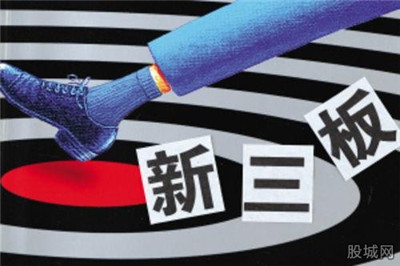(单词翻译:单击)
Chinese fund managers are piling in to the country’s nascent over-the-counter equity exchange, lured by the chance to invest in emerging industries such as technology and consumables that are under-represented on the country’s main bourses.
中国的基金经理们正扎堆进入这个国家新生的场外交易市场,被科技行业和消费相关行业等新兴产业的投资机会所吸引,这些板块在中国主要股市比重偏低。

An index launched last week shows the National Equities Exchange and Quotations (NEEQ) has gained 53 per cent in 2015, more than the 13 per cent rise for the Shanghai Composite Index and comparable to gains in ChiNext, Shenzhen’s Nasdaq-style start-up board.
上周推出的全国中小企业股份转让系统(National Equities Exchange and Quotations,简称NEEQ)成份指数迄今已上涨53%,超过上证综指(Shanghai Composite) 13%的涨幅,与纳斯达克式的深圳创业板(ChiNext)不相上下。
Launched in late 2012 and known as the “new third board”, NEEQ hosts trading of 2,130 companies, up from about 350 at the start of 2014.
NEEQ于2012年底推出,俗称“新三板”,其上市公司数量已达2130家,远远高于2014年初的大约350家。
Lured by the ease of listing on NEEQ compared with the often years-long approval process for China’s main stock exchanges, Chinese companies raised Rmb13.2bn ($2.1bn) on the platform last year and another Rmb2.9bn in the first two months of 2015.
相比中国主要交易所往往长达数年的审批过程,新三板挂牌更为容易,受此吸引,中国企业去年在新三板平台上融资132亿元人民币(合21亿美元),2015年头两个月又融资29亿元人民币。
“Companies on the new third board represent the direction of China’s economic transformation. Two years ago the State Council identified seven big strategic emerging industries. The new third board is a chance to invest in these trends,” said Fu Bairui, general manager at fund manager QHKY Fund, who manages a dedicated third board fund.
前海开源基金(QHKY Fund)专门负责管理新三板基金的董事总经理付柏瑞说:“新三板的企业代表了中国经济转型的方向。两年前国务院确定了七大战略性新兴产业。新三板是投资于这些趋势的机会。”
While China’s main bourses tilt towards state-owned industrial groups, financial institutions and property developers, tech companies comprise 30 per cent of companies listed on NEEQ while popular consumption-linked sectors such as healthcare, media and tourism comprise another 18 per cent. NEEQ uses a trading mechanism comparable to the OTC Bulletin Board or pink sheets trading system in the US.
中国的主板倾向于国有工业集团、金融机构和房地产开发商,而在NEEQ上市的公司里,科技公司占了30%,医疗保健、媒体和旅游业等大众消费相关行业占了18%。NEEQ所用的交易机制类似于美国场外交易公告牌(OTC Bulletin Board)或粉单市场(Pink Sheet)交易系统。
With investor interest in NEEQ surging, fund companies are scrambling to roll out new products. Until now, hedge fund-style products managing institutional money were dominant. But in recent weeks fund companies have launched mutual fund products to capitalise on demand from retail investors, offering products with thresholds as low as Rmb1m. Some analysts warn that the rapid price run-up is out of line with fundamentals. Much of the gains are driven by speculation that NEEQ companies will eventually be able to transfer to ChiNext or Shenzhen Small and Medium Enterprise board, where valuations are higher than NEEQ.
随着投资者对NEEQ兴趣高涨,基金公司竞相推出新产品。此前,管理机构资金的对冲基金式产品占主导地位。但最近几周基金公司纷纷推出共同基金产品,包括门槛低至100万元人民币的产品,以求获利于散户投资者需求。一些分析师警告称,价格快速上涨与基本面脱节。大部分价格上涨的驱动力来自于一个猜测,即NEEQ公司将最终能够转移到创业板或深圳中小企业版,它们的估值高于NEEQ。
Additional reporting by Ma Nan in Shanghai
Ma Nan上海补充报道


